2,3-Dimethylbenzoyl chloride
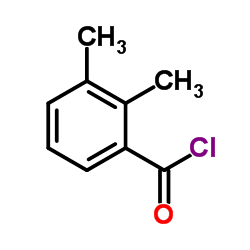
2,3-Dimethylbenzoyl chloride structure
|
Common Name | 2,3-Dimethylbenzoyl chloride | ||
|---|---|---|---|---|
| CAS Number | 21900-46-9 | Molecular Weight | 168.620 | |
| Density | 1.1±0.1 g/cm3 | Boiling Point | 245.6±9.0 °C at 760 mmHg | |
| Molecular Formula | C9H9ClO | Melting Point | 2°C | |
| MSDS | USA | Flash Point | 105.5±11.9 °C | |
Use of 2,3-Dimethylbenzoyl chloride |
| Name | 2,3-Dimethylbenzene-1-carbonyl chloride |
|---|---|
| Synonym | More Synonyms |
| Density | 1.1±0.1 g/cm3 |
|---|---|
| Boiling Point | 245.6±9.0 °C at 760 mmHg |
| Melting Point | 2°C |
| Molecular Formula | C9H9ClO |
| Molecular Weight | 168.620 |
| Flash Point | 105.5±11.9 °C |
| Exact Mass | 168.034195 |
| PSA | 17.07000 |
| LogP | 3.13 |
| Vapour Pressure | 0.0±0.5 mmHg at 25°C |
| Index of Refraction | 1.534 |
Synonym:2,3-Dimethylbenzoyl chlorid Section 2 - COMPOSITION, INFORMATION ON INGREDIENTS
Risk Phrases: 34 Section 3 - HAZARDS IDENTIFICATION EMERGENCY OVERVIEW
Causes burns.Moisture sensitive. Potential Health Effects Eye: Causes eye burns. Skin: Causes skin burns. Ingestion: Causes gastrointestinal tract burns. Inhalation: Causes chemical burns to the respiratory tract. Chronic: Not available. Section 4 - FIRST AID MEASURES Eyes: Immediately flush eyes with plenty of water for at least 15 minutes, occasionally lifting the upper and lower eyelids. Get medical aid immediately. Skin: Get medical aid immediately. Immediately flush skin with plenty of water for at least 15 minutes while removing contaminated clothing and shoes. Ingestion: Do not induce vomiting. Get medical aid immediately. Inhalation: Get medical aid immediately. Remove from exposure and move to fresh air immediately. If not breathing, give artificial respiration. If breathing is difficult, give oxygen. Notes to Physician: Treat symptomatically and supportively. Section 5 - FIRE FIGHTING MEASURES General Information: As in any fire, wear a self-contained breathing apparatus in pressure-demand, MSHA/NIOSH (approved or equivalent), and full protective gear. Extinguishing Media: Use foam, dry chemical, or carbon dioxide. Section 6 - ACCIDENTAL RELEASE MEASURES General Information: Use proper personal protective equipment as indicated in Section 8. Spills/Leaks: Absorb spill with inert material (e.g. vermiculite, sand or earth), then place in suitable container. Section 7 - HANDLING and STORAGE Handling: Do not breathe dust, vapor, mist, or gas. Do not get in eyes, on skin, or on clothing. Use only in a chemical fume hood. Storage: Store in a cool, dry place. Store in a tightly closed container. Corrosives area. Store under nitrogen. Section 8 - EXPOSURE CONTROLS, PERSONAL PROTECTION Engineering Controls: Facilities storing or utilizing this material should be equipped with an eyewash facility and a safety shower. Use adequate ventilation to keep airborne concentrations low. Exposure Limits CAS# 21900-46-9: Personal Protective Equipment Eyes: Not available. Skin: Wear appropriate protective gloves to prevent skin exposure. Clothing: Wear appropriate protective clothing to prevent skin exposure. Respirators: Follow the OSHA respirator regulations found in 29 CFR 1910.134 or European Standard EN 149. Use a NIOSH/MSHA or European Standard EN 149 approved respirator if exposure limits are exceeded or if irritation or other symptoms are experienced. Section 9 - PHYSICAL AND CHEMICAL PROPERTIES Physical State: Liquid Color: colorless - pale yellow Odor: characteristic odor pH: Not available. Vapor Pressure: Not available. Viscosity: Not available. Boiling Point: 96 - 98 deg C @15mmHg Freezing/Melting Point: Not available. Autoignition Temperature: Not available. Flash Point: Not available. Explosion Limits, lower: Not available. Explosion Limits, upper: Not available. Decomposition Temperature: Solubility in water: Specific Gravity/Density: Molecular Formula: C9H9ClO Molecular Weight: 169 Section 10 - STABILITY AND REACTIVITY Chemical Stability: Not available. Conditions to Avoid: Incompatible materials, exposure to moist air or water. Incompatibilities with Other Materials: Oxidizing agents, reducing agents, alcohols, amines. Hazardous Decomposition Products: Hydrogen chloride, chlorine, carbon monoxide, carbon dioxide. Hazardous Polymerization: Has not been reported Section 11 - TOXICOLOGICAL INFORMATION RTECS#: CAS# 21900-46-9 unlisted. LD50/LC50: Not available. Carcinogenicity: 2,3-Dimethylbenzene-1-carbonyl chloride - Not listed by ACGIH, IARC, or NTP. Section 12 - ECOLOGICAL INFORMATION Section 13 - DISPOSAL CONSIDERATIONS Dispose of in a manner consistent with federal, state, and local regulations. Section 14 - TRANSPORT INFORMATION IATA No information available. IMO No information available. RID/ADR No information available. Section 15 - REGULATORY INFORMATION European/International Regulations European Labeling in Accordance with EC Directives Hazard Symbols: C Risk Phrases: R 34 Causes burns. Safety Phrases: S 26 In case of contact with eyes, rinse immediately with plenty of water and seek medical advice. S 36/37/39 Wear suitable protective clothing, gloves and eye/face protection. S 45 In case of accident or if you feel unwell, seek medical advice immediately (show the label where possible). WGK (Water Danger/Protection) CAS# 21900-46-9: No information available. Canada None of the chemicals in this product are listed on the DSL/NDSL list. CAS# 21900-46-9 is not listed on Canada's Ingredient Disclosure List. US FEDERAL TSCA CAS# 21900-46-9 is not listed on the TSCA inventory. It is for research and development use only. SECTION 16 - ADDITIONAL INFORMATION N/A |
| Hazard Codes | C:Corrosive; |
|---|---|
| Risk Phrases | R34 |
| Safety Phrases | S26-S36/37/39-S45 |
| RIDADR | 3265 |
| Packaging Group | II |
| Hazard Class | 8 |
| HS Code | 2916399090 |
|
~99% 
2,3-Dimethylben... CAS#:21900-46-9 |
| Literature: Strocchi, Elena; Fornari, Francesca; Minguzzi, Manuela; Gramantieri, Laura; Milazzo, Maddalena; Rebuttini, Valentina; Breviglieri, Simone; Camaggi, Carlo Maurizio; Locatelli, Erica; Bolondi, Luigi; Comes-Franchini, Mauro European Journal of Medicinal Chemistry, 2012 , vol. 48, p. 391 - 401 |
|
~% 
2,3-Dimethylben... CAS#:21900-46-9 |
| Literature: Pesticide Science, , vol. 41, # 2 p. 139 - 148 |
|
~% 
2,3-Dimethylben... CAS#:21900-46-9 |
| Literature: Pesticide Science, , vol. 41, # 2 p. 139 - 148 |
|
~% 
2,3-Dimethylben... CAS#:21900-46-9 |
| Literature: Pesticide Science, , vol. 41, # 2 p. 139 - 148 |
|
~% 
2,3-Dimethylben... CAS#:21900-46-9 |
| Literature: Recueil des Travaux Chimiques des Pays-Bas, , vol. 79, p. 1211 - 1222 |
| Precursor 5 | |
|---|---|
| DownStream 9 | |
| HS Code | 2916399090 |
|---|---|
| Summary | 2916399090 other aromatic monocarboxylic acids, their anhydrides, halides, peroxides, peroxyacids and their derivatives VAT:17.0% Tax rebate rate:9.0% Supervision conditions:none MFN tariff:6.5% General tariff:30.0% |
| 2,3-diMethyl chloride |
| 2,3-Dimethyl-benzoylchlorid |
| Benzoyl chloride,2,3-dimethyl-(6CI,7CI,8CI,9CI) |
| 2,3-DIFLUORO-4'-METHYL-1,1'-BIPHENYL |
| 2,3-Dimethylbenzoyl chloride |
| Benzoyl chloride, 2,3-dimethyl- |
| MFCD00045217 |
| 2,3-Dimethylbenzene-1-carbonylchloride |

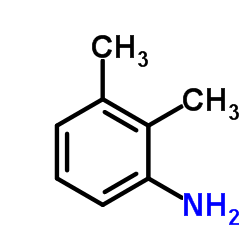

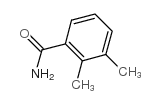
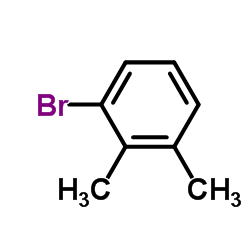
 CAS#:223553-34-2
CAS#:223553-34-2 CAS#:86347-14-0
CAS#:86347-14-0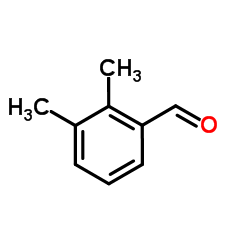 CAS#:5779-93-1
CAS#:5779-93-1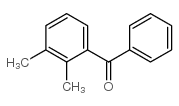 CAS#:13319-69-2
CAS#:13319-69-2 CAS#:2142-71-4
CAS#:2142-71-4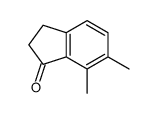 CAS#:16440-98-5
CAS#:16440-98-5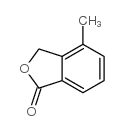 CAS#:2211-83-8
CAS#:2211-83-8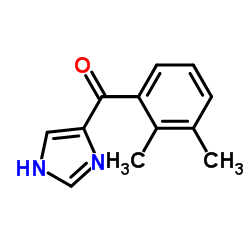 CAS#:91874-85-0
CAS#:91874-85-0